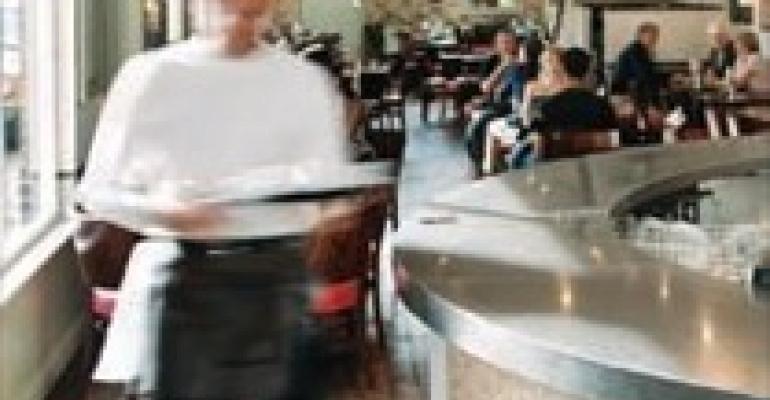BY STEVE DIPILLA
 |
| ROCK STEADY: Keep a clear and safe path. |
Traffic patterns are when and where people walk. This isn't always where you expect or intend them to walk, and it isn't always where the facility has been designed for them to walk. Traffic patterns matter because they represent the greatest potential for falls and accidents, especially during times of considerable activity.
High-traffic areas are especially conducive to trips and falls. They should be observed closely. First, try to observe your staff not as individuals, but from a distance, as if they were a school of fish. In particular, look to identify common paths employees take when moving between the front and back of the house.
Supplement your observations with an analysis of past slip and fall events to better pinpoint areas of concern. Where have falls occurred, and when? You might also ask employees why they walk where they do (although, since choosing a path isn't always a conscious decision, they may not be able to explain their choices).
Once you have this information, you're in a position to redirect traffic away from undesirable paths and onto preferred ones—or to make the undesirable paths safer. You may find that traffic flows are appropriate, but that some practices (such as floor cleaning) need to be improved or conducted more frequently.
Because people prefer the shortest and quickest path, it's generally best to design to that human behavior and to make the paths safer. This tends to reduce the potential for pedestrians to veer into unintended and possibly hazardous areas. Some improvement options to consider:
Remove or limit distractions that take employees' attention away from the task at hand. Avoid vivid floor patterns and obstructions where practical–especially those below knee height that can be easily missed in the fast pace of foodservice operations.
Ensure a glare-free, well-lit path. Insufficient lighting or glare in the path of travel can increase the potential for falls and can cause employees to change their travel paths to avoid such conditions. Providing substantial, glare-free lighting makes it easier to anticipate unexpected and undesirable floor conditions and gives employees a chance to avoid or more gingerly traverse the area.
Upgrade housekeeping. It is always a big challenge to maintain good housekeeping during times of peak activity. Grease, liquids and food can be readily tracked from the kitchen to the front of the house. Increased and more systematic monitoring of floor or mat conditions may be what's needed to make an unsafe path significantly safer.
Review space design features. Proper workspace design is one of the fundamentals of slip/trip/fall prevention. Ramps that are too steep, uneven steps, unmarked changes in levels and missing handrails are major contributors to falls. Installing and maintaining a slip-resistant floor surface is essential. Where possible, allow some elbow room in kitchen areas–greater congestion often leads to an increased potential for accidents.
Redirect traffic to preferred, safer paths. Use barriers to limit access to an undesired path, lighting to highlight the desired path and/or other visual cues such as floor arrows or mat designs to point the way.
Redesign paths or workflow. After all is said and done, you may conclude that the only answer is to redesign paths by creating an entirely new arrangement for the back and/or front of the house. While this may require more effort, it also affords an opportunity to optimize the space to improve efficiency.
Watch out for the customers, too. The same methods can also help keep customers on the straight and narrow. Use the same approach and procedures, beginning with a traffic flow analysis.
As you implement your changes, monitor accident experience to determine if there has been improvement. Also remember to review your traffic patterns regularly. Changes in participation, hours of operation and schedules in the workplace can create new traffic patterns that need to be addressed.
BANANASTOCK





